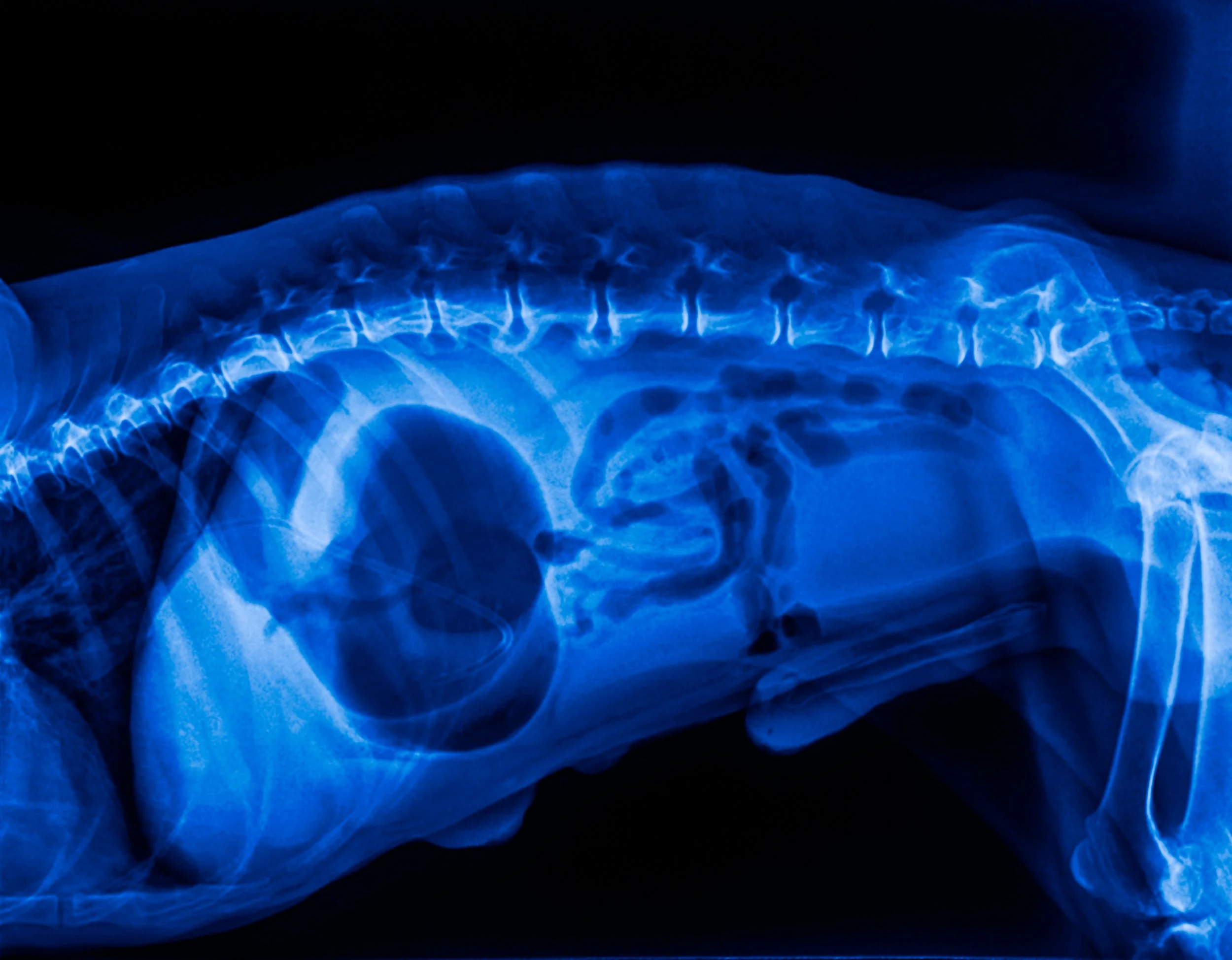What Are CT Scans for Dogs?
Computed tomography (CT) scans are advanced diagnostic tools used in veterinary medicine to provide highly detailed images of a dog’s body. While this technology was originally invented for humans it’s now widely used for dogs to detect and diagnose various health conditions that may not be visible through traditional X-rays, ultrasounds or physical exams. Learn more about canine CT scans and how this service can help diagnose possible health issues.
What Is a CT Scan?
A CT scan, also known as a CAT scan, is a sophisticated form of imaging that uses X-rays to create cross-sectional images of your dog’s body. Unlike standard X-rays, which provide two-dimensional images, CT scans allow veterinarians to see detailed, three-dimensional views of bones, tissues, and internal organs from different angles. This provides a much clearer picture, which is invaluable for diagnosing complex conditions.
How Does a CT Scan Work?
The CT scanner consists of a ring-shaped machine that rotates around the dog, taking a series of X-ray images from different angles. These individual images are then processed by a computer, which combines them to create a detailed, 3D model of the area being studied.
When Are CT Scans Used for Dogs?
Some of the most common reasons for a canine CT scan are:
Orthopedic issues: To examine bone fractures, joint problems, or to assess bone tumors.
Brain conditions: A dog CT scan can help diagnose brain conditions such as tumors, inflammation, or trauma.
Nasal problems: For investigating chronic nasal discharge, tumors, or infections.
Spinal problems: To detect issues such as herniated discs, spinal tumors, or malformations.
Thoracic (chest) imaging: To evaluate lung and heart conditions, especially when tumors or fluid buildup are suspected.
Abdominal issues: To examine internal organs like the liver, kidneys, and spleen for tumors, blockages, or other abnormalities.
Cancer detection and staging: To detect tumors or check if cancer has spread to other parts of the body.
Dental issues: To assess dental and jaw problems that might be causing discomfort or infections.
What Happens During a Dog’s CT Scan?
The process of getting a CT scan for a dog is straightforward but typically involves several key steps:
Sedation or anesthesia: Most dogs need to be sedated or anesthetized for a CT scan to ensure they remain completely still during the procedure. Movement can distort the images and make it harder for the veterinarian to get clear results.
Positioning: Once sedated, the dog is placed on a special table that slides into the CT scanner. The vet or technician will position the dog appropriately, depending on the area of the body being examined.
Imaging process: The scanner takes multiple images as it rotates around the dog, with the procedure typically lasting 10 to 30 minutes. The scanning process itself is painless.
Monitoring: While under sedation or anesthesia, the dog’s vital signs (heart rate, breathing, etc.) are closely monitored to ensure safety throughout the procedure.
Post-scan care: After the scan, your dog will be monitored until they wake up from the sedation or anesthesia. Most dogs recover quickly and can go home the same day.
Cost of a CT Scan for Dogs
The cost of a CT scan for dogs can vary depending on several factors, including the location of the veterinary facility, the area of the body being scanned, and whether a specialist is involved. On average, you can expect to pay between $500 and $1,500 for the procedure in the United States. That’s why MexiVet Express works with some of the best vets in Tijuana to offer dog parents unmatched prices for services such as advanced imaging for dogs.
Contact us today and get a personalized quote. We will find the best options for you, schedule your appointment and take your dog to-and-from their appointment in Tijuana. It’s that easy!







